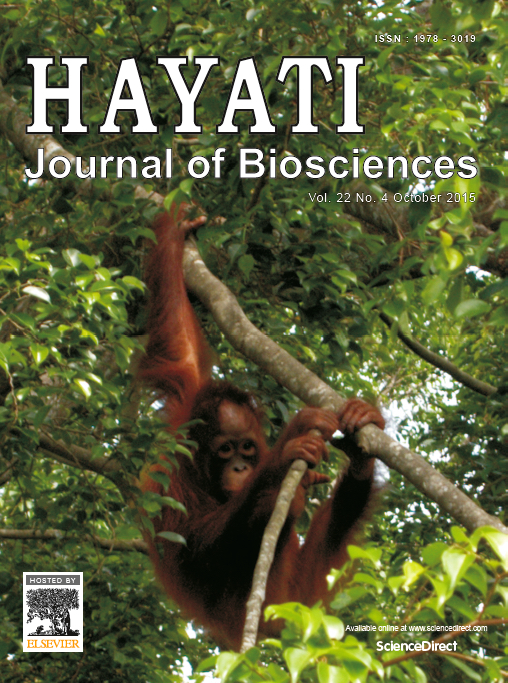Characterization and Identification of Cellulolytic Bacteria from gut of Worker Macrotermes gilvus
Abstract
As a social insect, termite colony consists of three castes, i.e. reproductive, soldier, and worker castes. In their role of cellulose digestion, the worker termites use two sources of cellulolytic enzyme that include cellulases produced by the termite and the gut symbions. Macrotermes gilvus classified in mound builder termite, mostly depend on cellulolytic bacteria for cellulose digestion. This study aims to characterize cellulolytic bacteria of termite gut symbionts of worker M. gilvus and to identify the cellulolytic bacteria based on sequences of 16S ribosomal RNA (rRNA) gene. Cellulolytic bacteria of termite gut were isolated and cultured in CMC (Carboxymethyl cellulose) media. The biochemical characters of bacterial isolates were assayed using Microbact 12A and 12B. Cellulolytic activity was determined based on formation of clear zone and cellulolytic index on CMC plate media. The bacterial isolate that has the highest cellulolytic index was analyzed for its 16S rRNA gene sequences. Four isolates of cellulolytic bacteria were successfully isolated from gut of M. gilvus with aerobic and anaerobic conditions. The highest formation of cellulolytic index (2.5) was revealed by RA2. BLAST-N (Basic Local Alignment Search Tool for Nucleotides) result of 16S rRNA gene sequences of RU4 and RA2 isolates showed that the isolate has similarity with Bacillus megaterium and Paracoccus yeei, respectively. This result indicated that RA2 isolate was P. yeei, a cellulolytic bacterium of a termite gut of M. gilvus.
Downloads
HAYATI J Biosci is an open access journal and the article's license is CC-BY-NC. This license lets others distribute, remix, tweak, and build upon author's work, as long as they credit the original creation. Authors retain copyright and grant the journal/publisher non exclusive publishing rights with the work simultaneously licensed under a https://creativecommons.org/

























.png) IPB University
IPB University Department of Biology
Department of Biology The Indonesian Biological Society
The Indonesian Biological Society 

